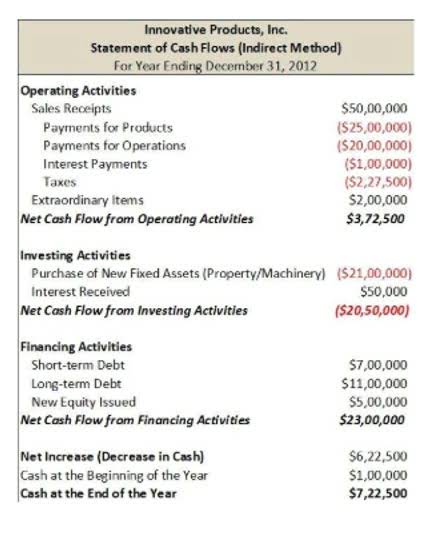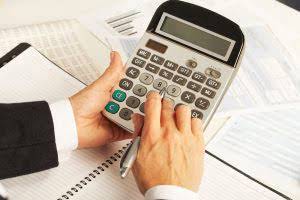How a General Ledger Works With Double-Entry Accounting Along With Examples
The GL report can display the accounts alphabetically or in the order of Assets down to Expenses. Click above button to get our most popular Excel Template for easy bookkeeping! Free accounting tools and templates to help speed up and simplify workflows. Say, you record a Prepaid Rent of $500 at the end of every month, the adjusting entry would be as follows.
Transactions are posted to individual sub-ledger accounts, as defined by the company’s chart of accounts. Income statements are considered temporary accounts closed at the end of the accounting year. Their net balances -- positive or negative -- are added to the equity portion of the balance sheet. In contrast, the accounts that feed into the balance sheet are permanent accounts used to track the business's ongoing financial health. Adjusting entries are prepared at the end of an accounting period to consider income or expenses that have not yet been recorded in the general ledger. As a result, these entries can be for accrued expenses, accrued revenues, prepaid expenses, deferred revenues, and depreciation.
Every financial transaction that you record is called a journal entry, and those journal entries are kept in your general ledger. This means everything from bank statements to invoices are kept in one place, so you, your accountant, or your business partner don’t have to search other statements or records to put the pieces together. A Chart of Accounts is a list of all the accounts used by a business to record financial transactions.
When Do I Need General Liability Insurance for My Business?
A GL policy at Berxi can start at $100, but most professionals with offices can expect to pay between about $350 and $550 per year, or between $30 and $46 per month. But when choosing a general liability insurance provider, it’s important to consider cost as well as coverage and company strength. Berxi offers distinct advantages for businesses seeking reliable GL coverage. For example, general liability insurance doesn’t typically cover damages to your own property, professional errors or negligence, employee injuries, automobile accidents, or business disputes.
Exploring the different types of General Ledgers
- All financial statements like the income statement, balance sheet, and cash flow statement all draw upon the transaction records found in the general ledger.
- All of these statements are built on the data that’s recorded in the general ledger.Without the GL, you don’t have the three main statements we mentioned above.
- While the fundamental principles of keeping a ledger are the same for all businesses, the scope and complexity of each ledger can vary depending on the size of your company.
- So, as per the Duality Principle, each transaction will involve a minimum of two accounts, meaning one account will increase while the other decreases.
- In such systems, the GL serves as a central repository for the accounting data.
This integration ensures that payroll expenses are accurately reflected in the company's main financial statements. A complete list of all general ledger accounts that a company uses is contained within the chart of accounts, which is a simple listing of account numbers and account descriptions. The chart is usually organized to show all balance sheet accounts, followed by all income statement accounts.
How does the general ledger integrate with financial reporting?
It also showcases the amount you pay to your suppliers or the amount yet to be paid for any purchases. As a result, each transaction of your business takes place in such a way that this equality between the two sides of the accounting equation is always maintained. That is, at any point in time, the resources or the assets of your business must equate to the claims invoice templates gallery of owners and outsiders.
General ledgers and double-entry bookkeeping
Examples of other general ledger accounts that are commonly used are noted below. A general ledger contains information related to different what is a schedule c irs form accounts, providing information that helps you in preparing your business’ financial statements, including income statements and balance sheets. All financial statements like the income statement, balance sheet, and cash flow statement all draw upon the transaction records found in the general ledger.
What Is the Purpose of a General Ledger?
The ledger’s accuracy is confirmed by a trial balance, which ensures that the total of all debit accounts equals the total of all credit accounts. GL is a set of ledger accounts where transactions recorded in journals are posted. A balance sheet is a statement that presents the company’s financial position at a point in time. General ledger reconciliation is the process of periodically verifying the accuracy of financial records. These are what’s used to record your transactions by date, and can include things like payments against invoices and their totals. These then get recorded in your general ledger.Depending on how your GL is organized, this might be categorized into something called subledger.
What Does My Business Need to Apply for General Liability Insurance?
Following the accounting equation, any debit added to a GL account has a corresponding and equal credit entry in another account and vice versa. For example, you'll need to record rent expenses every month if you rent computers and decide to prepay the rent in January for the next twelve months. This is done because you do not want to understate any expenses in your 490 west end ave in upper west side financial statements for the next 12 months. If you identify errors or misstatements, you can then take the requisite actions to make good the errors. If you are preparing the journal or ledger manually, you or your accountant will need to go through each of the accounts individually.
- In this case, 5 represents expense transactions, 53 would be operating supplies, 531 is federal supplies, and 5311 refers to office supplies.
- It helps to show exactly where money is going in and out from so you have granular visibility into your business finances.
- Here is an example of a sales ledger using the T format - I've made the "T" orange so you can see it clearly.
- For example, if you want to lease office space, your landlord will likely require you to carry general liability insurance before signing a lease.
- The following are the steps to a proper general ledger accounts reconciliation in detail.
- Whereas, the sales details of various debtors like Jack & Co., Mayers, and John can be found in the related subsidiary ledger.
- Get free guides, articles, tools and calculators to help you navigate the financial side of your business with ease.
However, in recent decades, they've been automated using enterprise accounting software and in enterprise resource planning applications. These tools integrate core accounting functions with modules for managing related business processes. This is because you, or an accounting professional, are no longer required to go through the pain of recording the transactions in the journal first before transferring them to the ledger. A general ledger is the second most important book of entry after the Journal, because you record transactions under specific account heads in Ledger. The credit sales figure of $200,000 would go into the accounts receivable control account. Whereas, the sales details of various debtors like Jack & Co., Mayers, and John can be found in the related subsidiary ledger.
If you use accounting software, the software itself should guide you through the process of reconciliation. (If you work with an accountant, they’ll perform the same process using whichever accounting software their firm works with.) Generally speaking, you’ll follow these steps to reconcile your ledger. Put as simply as possible, you want to make sure all of your accounts are balanced, meaning your debits and credits are perfectly weighted.
In this case, 5 represents expense transactions, 53 would be operating supplies, 531 is federal supplies, and 5311 refers to office supplies. While a sub-ledger is a comprehensive record of particular transaction types, a general ledger is a detailed overview of an organization’s financial standing and key performance. Profit and loss accounts—or income statements—are known to be temporary accounts. Typically, all transactions are initially recorded in the general journal, and then all the related accounts are transferred to the general ledger. The general ledger (GL) summarizes all the financial information pertaining to your business. Most companies have many of the same general accounts like cash, accounts payable, and retained earnings, but some companies have specialized accounts specific for their operations.
Using general ledger codes
The assets are categorized into current assets and fixed assets, and are typically reported on the left hand side of your company’s balance sheet. In this instance, a subsidiary ledger records detailed information of the related control account. Accounts receivable is most commonly used as a general Ledger control account.
In addition to this, the information contained in general ledgers help you to run any audits smoothly. Operating expenses are mandatorily incurred expenses that are necessary in the day-to-day operations of your business. These are the expenses that you would not be able to carry out your core business operations without, these include rent, payroll, insurance, etc.
Now that you’ve learned more about what a general ledger is in accounting, you’ll be better able to provide your accountant with the information they need to keep your books balanced. To maintain the accounting equation's net-zero difference, one asset account must increase while another decreases by the same amount. After the net change from the transaction, the new cash account balance will be reflected in the balance category. The description of the transaction states the reason behind the transaction. In this example, the transaction is for a cash payment from a client account to ABCDEFGH Software.





